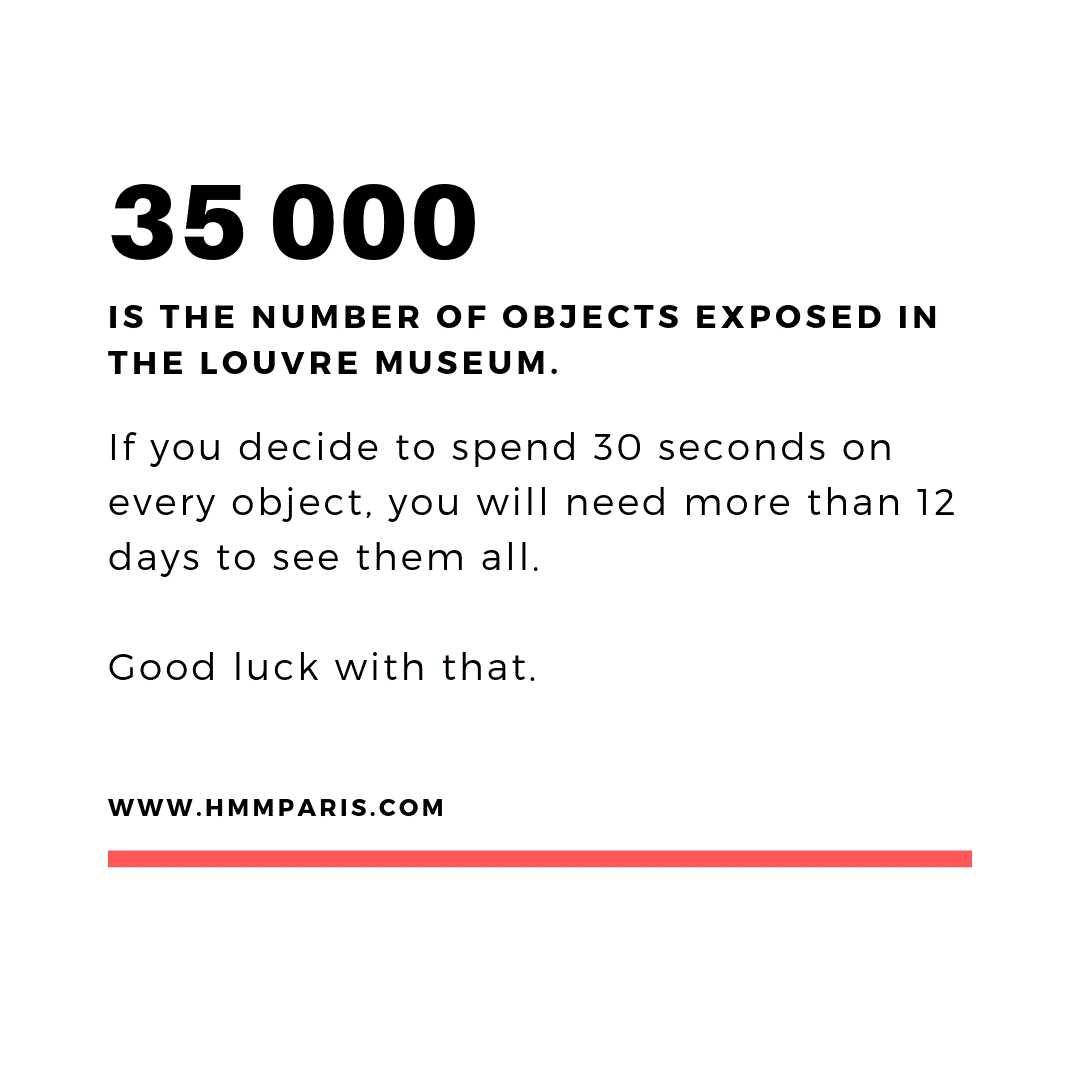Louvre Museum_Musée du Louvre

- Musée du Louvre, 75001
- Métro 1: Palais Royal - Musée du Louvre
- Adults: 17 €, children: free of charge
- Accessible to people with disabilities
The entrance to the Louvre Museum for minors and adults aged 18 – 25, citizens of the European Union, is free of charge upon demonstration of identity card or passport.
Louvre Museum_The most visited museum in the world
The Louvre Museum (French: Musée du Louvre ) is one of the largest and oldest art museums in the world. It has been a royal palace for many centuries, but transformed into a museum after the French Revolution. It is located in the center of Paris, in the 1 district and in the majestic halls of the museum you will find above 35.000 works of art. That is just about 8% of its contents, calculated at 445.000 pieces. The permanent collections of the museum occupy a total area 60.600 square meters and among them are the Greek ones, which cover 25 rooms or rooms.
The once medieval fortress in the heart of Paris is, for two centuries, one of the world’s most important museums – and with 9,7 million visitors per year, keeps proudly the sights of the world’s most popular museul. His exhibits cover a chronological period that begins from antiquity and reaches the first half of the 19th century.
The museum has categorized his works in various sections and the pieces are exhibited in many different locations. These collections are as follows:

Department of Eastern Antiquities
This section includes works from various countries from India and Afghanistan to Turkey, Syria and Cyprus. It is divided into three collections: Mesopotamia (with exhibits of Sumerian, Babylonian, Assyrian, etc.), Iran and the Middle East.
Department of Egyptian Art
This section was created 1826 and includes 55.000 findings from which they are exposed 6.000. It follows Egyptian history from the Pharaonic era to the Copts, the Ptolemies and the Romans.
Department of Antiquities of Greek, Etruscan and Roman
This is the oldest part of the Louvre museum after paintings section. Among the exhibits that stand out here are:
the ” Aphrodite of Milos “
the ” Nike of Samothrace “
the “Rampin Rider”
“Hercules and the Bull of Crete”
the “Ergastines”, a part of the Parthenon frieze, dates back to 447-438 BC.
the “Kentauromakhía”, part of the Parthenon metope.
Department of Sculpture
At the beginning, the museum exhibited exclusively statues that belonged to the period of antiquity, with the exception of Michael Angelos sculptures. After 1824, however, he began to exhibit sculptures of other times, to which he devoted five halls – works from the Renaissance to the 18 century.
Department of Islamic Art
This section was created by gathering works from Spain and North Africa, the Middle East, Arabia and India.
Department of Artistic Objects
Among the exhibits belonging to this section are jewelery, bottle, statuettes, stained glass, casettes and generally small art objects. Also in this area are larger art objects, such as period furniture – from the middle to the middle of the century.
Section of paintings
In this section there are around 6.000 painting which were created from the Middle Ages until 1848. The 2/3 of these are exhibits of French artists, such as Delacroix, David and others. The exhibits include one of the largest collections of (4) works by northern artists – from Netherlands, Flanders and Germany – with 15 works by Rembrandt, 51 works by Peter Paul Rubens, works by Johannes Vermeer, Albrecht Dyrer, Hans Holbain , etc. The Italian school is also very rich, with about 1.100 works by Italian painters, among whom are the world famous portrait of Mona Lisa (and other works) by Leonardo da Vinci, 15 works by Paolo Veroneze, 15 Titian’s paintings, 10 by Raphael, and others. The Spanish collection includes works by Velázquez, Murello Rivera and Goya, El Greco and others.
Section of engraving and drawings
This section includes designs on paper and engravings, as well as stamps and artistic books.

With the Paris Pass, you have free access to all of Paris’s major museums and attractions.
The list includes more than 60 museums, and one bus tour in Paris. Along with the Paris Pass you will receive a card Paris Visite for your transportation to Paris, maps and a travel guide.
